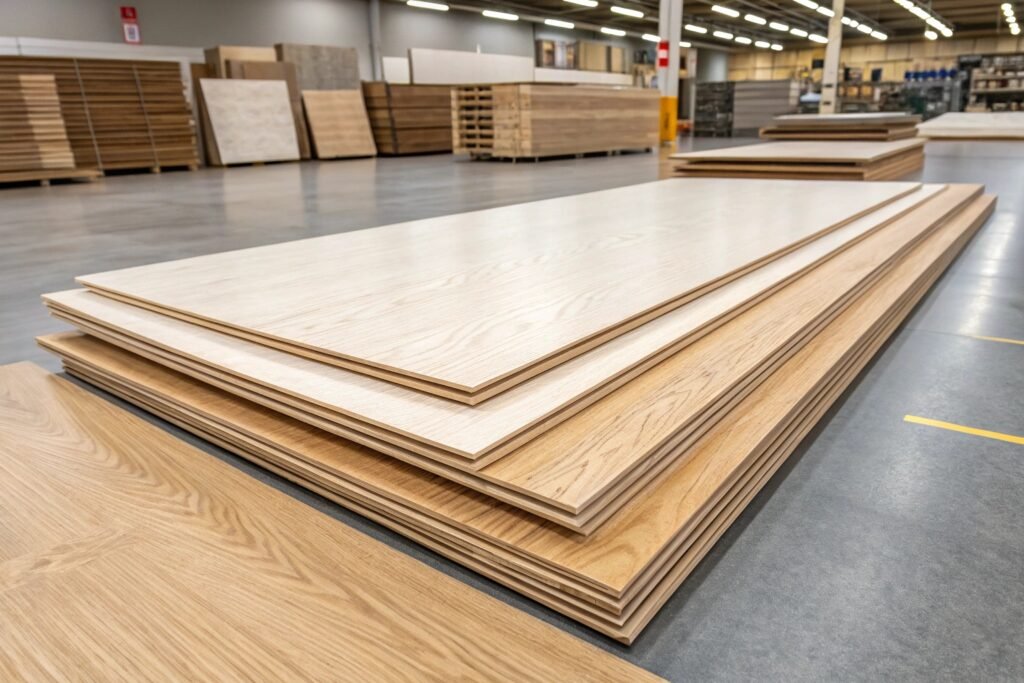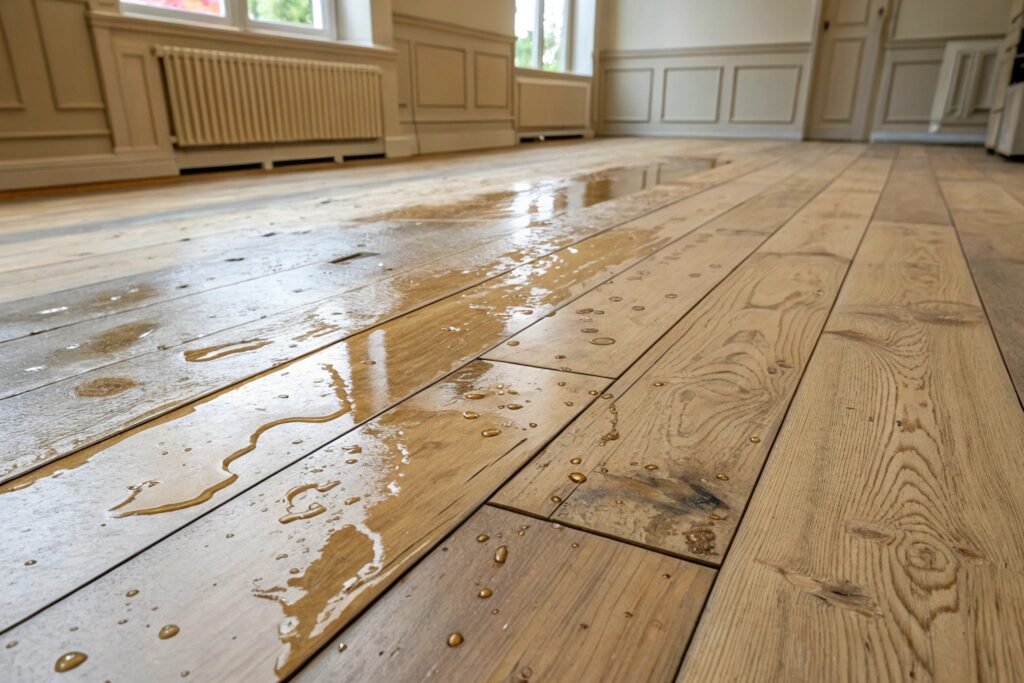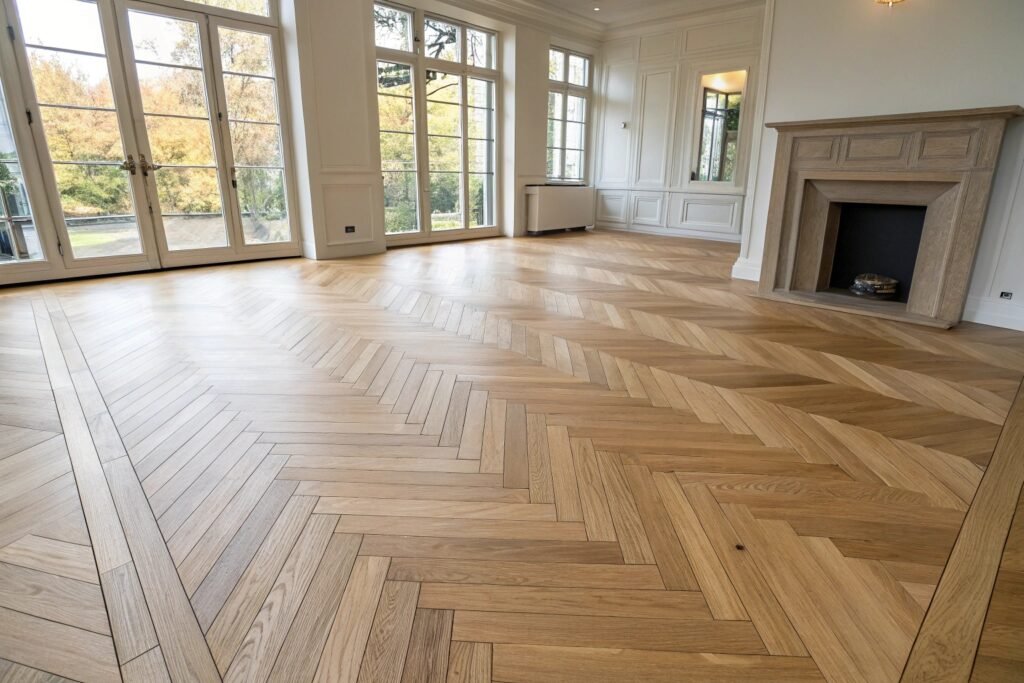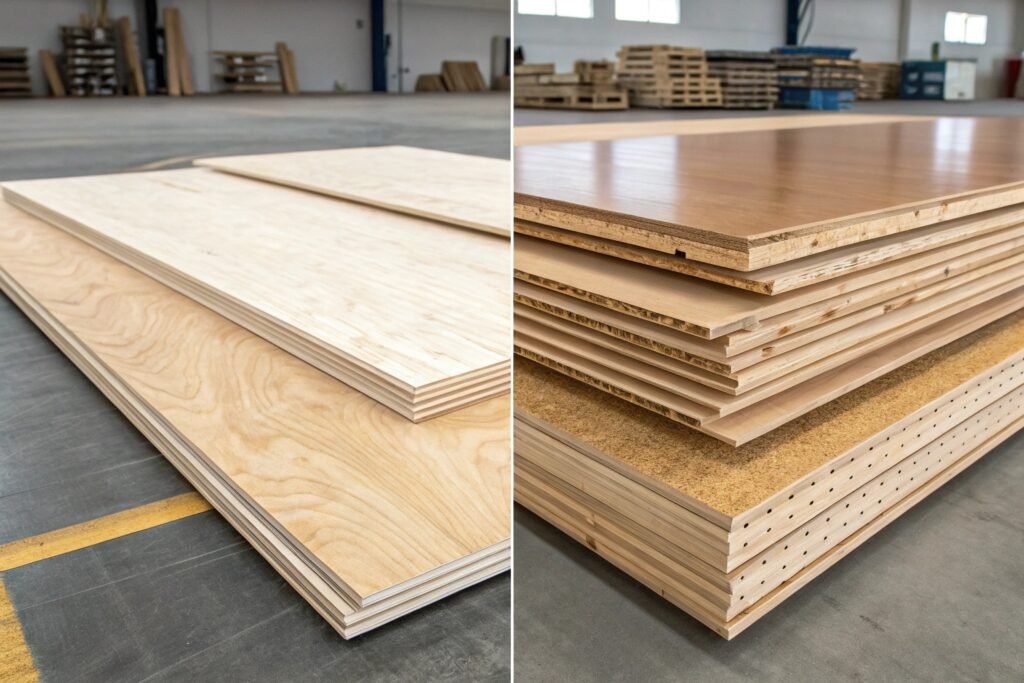Plywood may not be the first material you think of for flooring—but with the right approach, it can be durable, stylish, and affordable.
Plywood flooring uses strong, flat panels to create a stable base or finished surface—when installed and sealed correctly, it supports long-term residential and light commercial use.

In modern flooring, plywood isn’t just a subfloor. With the right type, finish, and layout, plywood can be a beautiful finished floor in itself. It’s a cost-effective choice in cottages, studios, tiny homes, or retail spaces. But success depends on panel selection, moisture control, and proper installation. Let’s break down the pros, cons, installation techniques, and how to choose the right grade and thickness for your project.
What are the disadvantages of plywood flooring?
While practical and affordable, plywood flooring isn’t perfect—and the wrong setup can cause problems.
Plywood flooring is vulnerable to water damage, surface denting, and visual inconsistency if not sealed or installed correctly.

Plywood is not naturally water-resistant. Without proper sealing, it can swell or delaminate when exposed to spills or high humidity. The surface is softer than hardwood, so it’s prone to scratches and dents. Voids inside the core may telegraph through the surface over time. Aesthetic uniformity can also be a challenge—grain, knots, and patchwork vary by panel. And because it’s not tongue-and-groove like engineered flooring, seams must be handled carefully to avoid gapping or uneven wear.
Can you just use plywood for flooring?
Surprisingly, yes—many have turned plywood into finished floors with great success.

To use plywood as the top flooring surface, start with a high-grade panel like AC or sanded cabinet-grade sheets. Cut panels into strips or squares, lay them in a pattern (brick, herringbone, etc.), then glue and nail them down securely. Fill joints, sand the surface smooth, and apply multiple coats of polyurethane or epoxy. This creates a smooth, natural wood finish that’s durable for residential or light commercial foot traffic. Use rugs or pads to protect high-use zones and add warmth.
What is the best type of plywood for flooring?
Not all plywood is created equal—some types are better for wear, strength, and stability.
The best plywood for flooring is tongue-and-groove exterior-grade plywood or multi-ply birch for finished surfaces.

For subfloors, CDX or Sturd-I-Floor rated tongue-and-groove plywood is ideal. It’s moisture-tolerant, strong, and interlocks to reduce flex. For visible finished floors, Baltic birch or cabinet-grade plywood offers more plies, fewer voids, and a consistent face veneer. These are easier to stain, seal, and finish smoothly. Avoid cheap construction-grade sheets—they often have surface patches, core voids, and poor dimensional accuracy. Always use panels rated for flooring applications if the plywood will be exposed to wear.
What thickness plywood should I use for flooring?
Go too thin and the floor flexes. Too thick, and doors or transitions might not align.
For flooring, use at least 3/4" (18mm) plywood for subfloor or top floor use; thinner sheets should only be used as a decorative overlay.
3/4" plywood is the industry standard for strength and stiffness. It handles furniture weight and foot traffic without sagging. In some cases, 5/8" can be used if installed over closely spaced joists or as a top layer over an existing subfloor. If you’re using plywood strips or tiles decoratively over concrete or hardwood, 1/2" thickness may be enough—but it must be glued down and fully sealed. The goal is a floor that feels solid and resists movement, noise, or deflection.
Conclusion
Plywood flooring is a practical and stylish option when chosen and installed correctly. Pick the right thickness, grade, and finish to create long-lasting results—whether it’s under your feet or part of your interior design.
